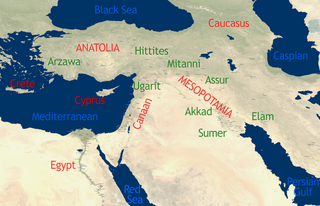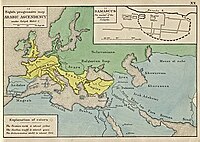| The ancient Near East |
|---|
 |
This timeline tries to compile dates of important historical events that happened in or that led to the rise of the Middle East. The Middle East is the territory that comprises today's Egypt, the Persian Gulf states, Iran, Iraq, Israel and Palestine, Cyprus, Jordan, Lebanon, Oman, Saudi Arabia, Syria, Turkey, United Arab Emirates, and Yemen. The Middle East, with its particular characteristics, was not to emerge until the late second millennium AD. To refer to a concept similar to that of today's Middle East but earlier in time, the term ancient Near East is used.
This list is intended as a timeline of the history of the Middle East. For more detailed information, see articles on the histories of individual countries. See ancient Near East for ancient history of the Middle East.




